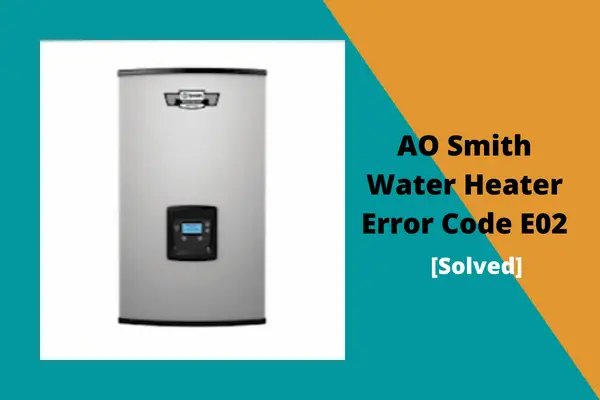
So, what exactly does error code LE mean? In essence, this code indicates a leak somewhere in the system. Now, I know what you’re thinking—how can a machine detect a leak? Well, these water heaters are quite clever. They’re designed with sensors that can detect even the tiniest hint of moisture, giving you a chance to address the issue before it turns into a bigger problem. Think of it as your water heater’s version of a check engine light—an alert that it’s time to take action.
Understanding Error Code LE: What It Really Means
When your Ao Smith water heater displays error code LE, it’s essentially tattling on a leak issue in the system. Picture it like this: imagine a ship with a small hole in the hull. It might start letting in water slowly, but eventually, it could lead to a much bigger problem if not taken care of swiftly. Your water heater’s ‘LE’ code is that initial trickle of water entering the ship.
The error code doesn’t specify where the leak is located, which can be frustrating. It’s like trying to find a missing sock in a house full of laundry. But rest assured, there are common spots to check. Leaks can often occur around loose connections, aging joints, or worn-out seals. If you’ve got an older unit, the chances of experiencing these issues are a bit higher—much like how an old car might need more maintenance compared to a new one.
Here’s the deal: when you see this code, it’s crucial to start by visually inspecting the unit. Look for any obvious signs of water around the heater or moisture on the floor. In many cases, simply tightening some connections or replacing a worn seal can resolve the issue. It’s like finding the missing piece to a puzzle—everything just clicks into place once you fix it.
Exploring Common Causes: Loose Connections
One of the first things you’ll want to check when faced with error code LE is the connections within your water heater system. Think of these connections as the glue holding everything together. Over time, they can become loose due to regular wear and tear, just like a favorite old sweater might start to unravel at the seams.
Now, you might be wondering, “How do these connections become loose?” Well, it’s usually a result of the constant expansion and contraction of metal parts as they heat up and cool down. This natural process can gradually loosen the fittings, leading to potential leaks. With a simple adjustable wrench, you can often give them a good tightening, much like securing a loose doorknob.
But remember to be gentle! Over-tightening can cause more harm than good, similar to how pulling too hard on a zipper can break it. You want to tighten the connections just enough to stop any leaking, without applying excessive force. If you’re unsure of your handy skills, consider reaching out to a professional for assistance.
The Role of Wear and Tear: Aging Seals and Joints
Another common culprit behind the LE error code is the natural wear and tear of seals and joints in your water heater. Imagine them as the unsung heroes, holding the line against leaks and drips. Over time, however, these components can degrade, much like how an old pair of shoes eventually needs sole replacements.
These seals and joints can become brittle and cracked due to continuous exposure to water and varying temperatures. Once they lose their integrity, it’s only a matter of time before leaks begin. Identifying these issues involves a close inspection—think of it like detective work, searching for a crack in the armor.
Replacing these parts isn’t overly complicated, but it requires some precision and care. New seals and joints can be ordered from most plumbing supply stores, and installing them is a bit like putting a new piece in a jigsaw puzzle. If you’re not comfortable doing this yourself, a professional plumber can ensure it’s done correctly, safeguarding your water heater from future issues.
Preventative Measures: Keeping Your Water Heater Healthy
So, how can you prevent the LE error code from popping up in the first place? Well, regular maintenance is key. It’s like taking your car for an oil change; periodic check-ups can help catch issues before they develop into significant problems.
Start by scheduling an annual inspection with a certified technician. They can perform a thorough check-up, tightening any loose components, and replacing worn seals before they fail. This proactive approach not only extends the lifespan of your water heater but also gives you peace of mind.
Additionally, consider installing a water alarm. This small device is like a smoke detector for your water heater, alerting you to leaks before they cause major damage. It’s a small investment that can save you a big headache down the road.
In conclusion, while the Ao Smith water heater error code LE might seem daunting at first, understanding its causes and solutions can empower you to take swift action. By keeping an eye on connections, seals, and overall maintenance, you can ensure your device runs smoothly, delivering the hot water you crave. Stay vigilant, and you’ll keep those cold shower surprises at bay.